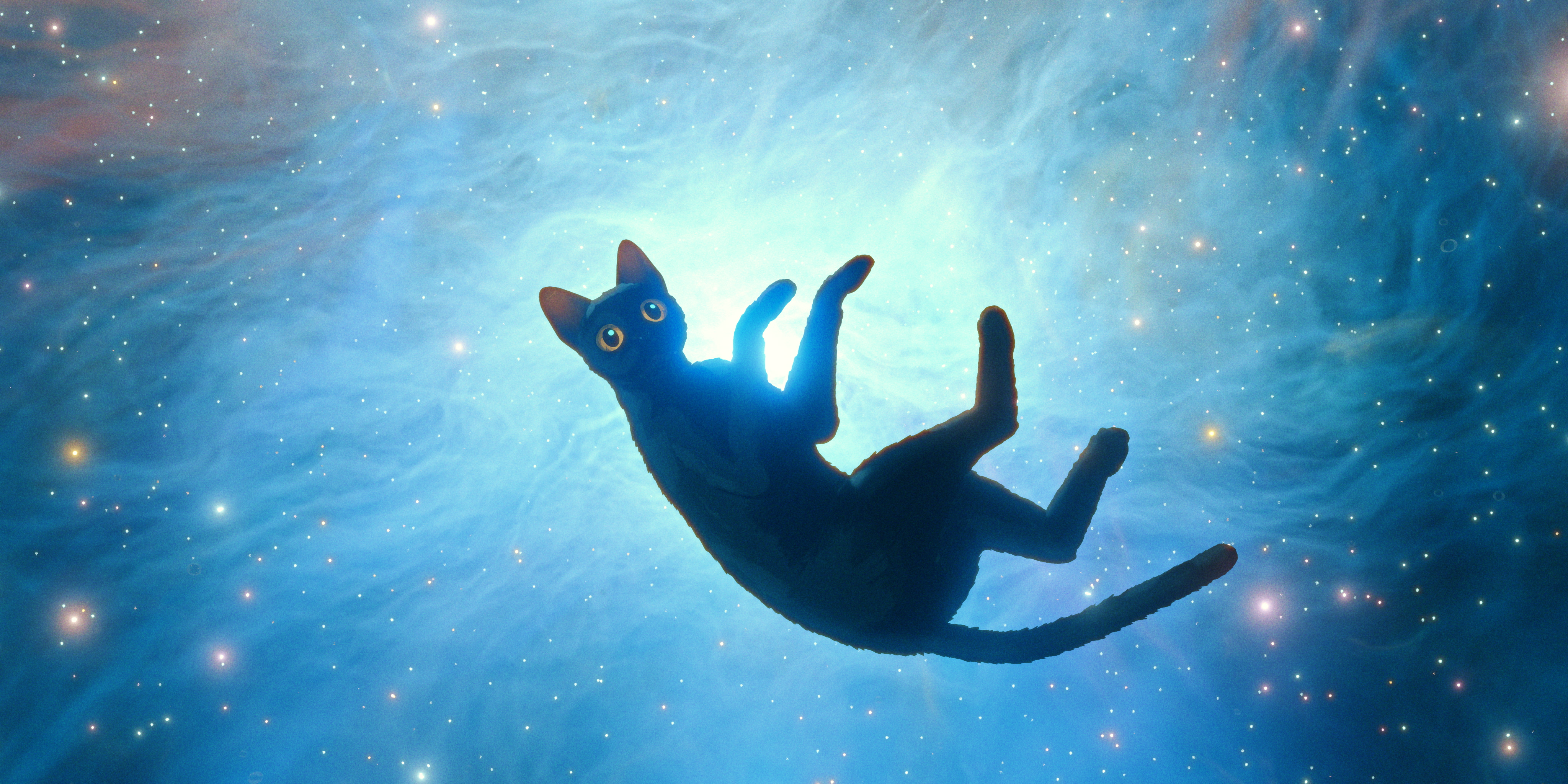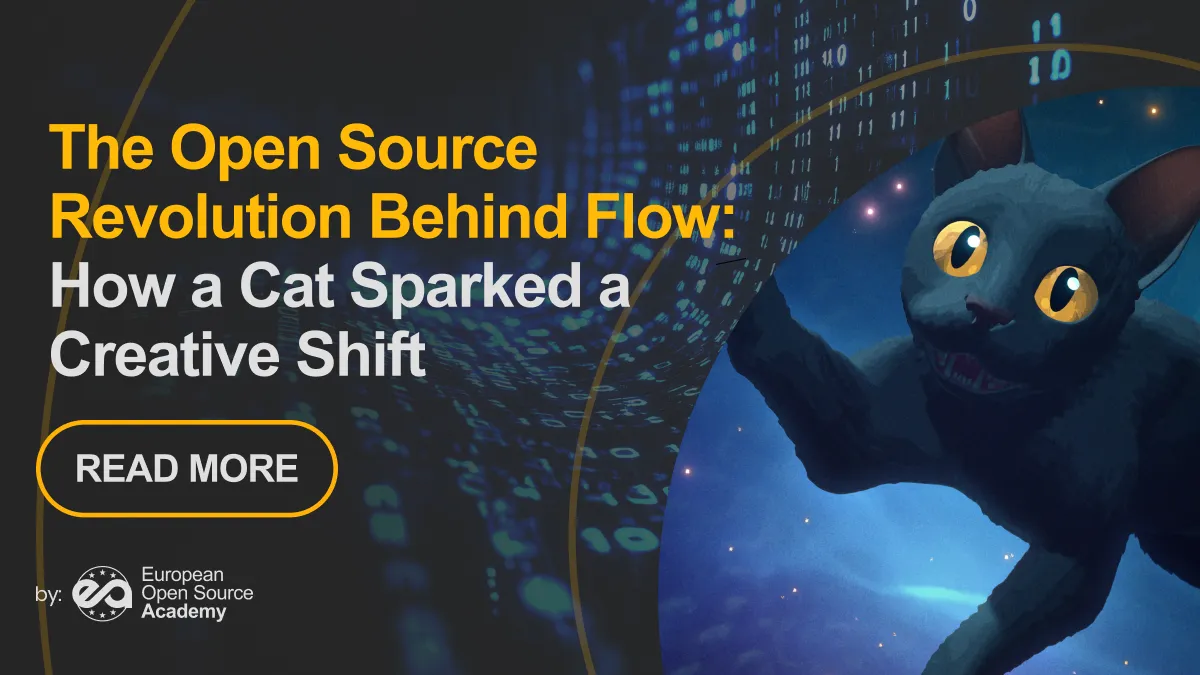When creativity meets code: How Blender and Flow are shaping Europe’s cultural and digital independence

Credit: Dream Well Studios (Gints Zilbalodis) Still out of Flow
An Interview with Léo Silly-Pélissier, Animation Director of the Oscar-winning animation Flow, and Francesco Siddi, COO of Blender, to highlight the importance of open source recognition across industries and borders.
Open source has long been an engine for innovation, but in 2025, it made its way to the red carpet. Flow, a poetic 3D-animated film created with the free and open source software Blender, won the Oscar for Best Animated Feature. This milestone was more than a cinematic triumph—it marked a major shift in how creative tools, open collaboration, and technological sovereignty are being understood across Europe and beyond.
The Open Path to Sovereignty
Open source is no longer a niche interest among programmers and technologists—it has become a strategic imperative for the European Union. With countries like Denmark turning to open source solutions, the conversation has moved beyond cost-efficiency to something more foundational: control over public data, innovation sovereignty, and resilience against dependency on non-European tech giants.
This trend is also reshaping the creative industry. Independent animators and studios are increasingly leveraging open source tools like Blender to tell stories with fewer financial barriers and more creative freedom.
Credit: The Silk Road International Film Festival (SRIFF)
A Cat, a Flood, and a Philosophy of Collaboration
At the center of Flow is a small black cat navigating a post-human world. Accompanied by an unlikely group—a lemur, a secretary bird, a capybara, and a Labrador—the cat must cooperate to survive a world transformed by a mysterious flood. Directed by Gints Zilbalodis, the film is notable for its lack of dialogue, relying instead on visual storytelling that mirrors the core values of the open source ethos: adaptability, interdependence, and community.
Themes of openness and cooperation aren’t just on screen—they were embedded in the production process itself. The Flow project team's commitment was demonstrated by their trips to zoos to watch the real-life movements and nonverbal cues between the animated animals, to capture it within Blender.
As Belgian co-producer of Flow Gregory Zalcman put it,
“Flow is a celebration of resilience, connection, and the beauty of non-verbal storytelling. As Belgian co-producers, we were drawn to the film’s poetic power and its universal message, especially meaningful in today’s divided world.
Working with Blender for the first time was a revelation: the open source approach aligns beautifully with the spirit of creative collaboration that defines this project. It’s exciting to see how accessible, community-driven tools like Blender are pushing the boundaries of artistic expression in animation.”
Credit: Léo Silly-Pélissier and team at the zoo to capture the animals natural body language and communication for the animation (Virginie Guilminot)
"I Encourage All Studios to Use Blender"
Animator Léo Silly-Pélissier spoke to the experience of using Blender to animate Flow
“Working with Blender is very user-friendly and it has many useful and innovative tools already included! You can also easily develop your own tools to improve and personalise the software itself, according to the project.
Also, Blender evolves very quickly and each new version makes our work easier, more efficient and more pleasant to use. It continues to improve thanks to the community and the feedback and exchanges after each project, as with Flow.”
According to Léo, the team took just one week to master Blender’s tools. For an independent production, this was invaluable and reflects the adaptable and easy-to-use nature of the open source tool.
“The cost-reduction and the efficiency of using Blender was another great reason to utilise this software,” he added. “I encourage all studios to move to using Blender.”
But more than cost or convenience, Silly-Pélissier emphasises the spirit of collaboration, teaching the sense of community:
“I taught Blender to students but also for animation directors for some companies and see more and more projects made on blender, it's encouraging and satisfying to see that the industry now takes a very serious consideration of using Blender for their projects.”
Léo mentioned that he will work on other open source projects in the future and teased that he will soon start working on a new project with Gints in a similar nature. Open source left a lasting impression on Léo and will continue to find its way into more projects in future, hopefully adapted by fellow animators.
Credit: Léo Silly-Pélissier at the BCON demonstrating animating with Blender
“Open Source Doesn’t Mean It’s Free”
A common misconception, Léo points out, is that open source equals zero cost.
“Open source doesn't mean free," he said. "First of all, there are different models that can lead to confusion... but for totally free software like Blender, we mustn't forget the work done upstream by the Blender teams and participate in one way or another in keeping the software alive.
In any case, using Blender allows productions to save costs, which is very interesting for small studios and independent projects and you can remunerate more the people, improve the working conditions with the money saved”
He emphasises how crucial this can be when funding is scarce:
“There are not many financial supporting opportunities for smaller independent projects. This is where Blender comes in.”
Beyond the technical aspects, Léo sees open source as politically significant: it empowers creators, protects creative control, and aligns with broader goals of digital independence. According to Léo, the Academy may be able to help these opportunities by promoting, acknowledging, and showcasing open source contributors and tools for broader adoption and raising awareness of the significance of funding and supporting such.
Credit: Léo Silly-Pélissier and the team at the office in Marseille (Virginie Guilminot)
The Blender Philosophy: Tools for the People
Francesco Siddi, COO of Blender, reinforces this vision of empowerment:
“Open source is not only a software or hardware option, it is to empower the people to have the freedom and control over what they use to create.”
He also highlights the importance of sustainability and funding:
“Software is free but it’s not free to make. You need to somehow support the developers and contributors involved.”
The Blender ecosystem is sustained through a mix of individual donations—and corporate support, especially from economically stronger parts of Europe. But Siddi points to an imbalance: large European companies use open source software but often fail to support it in return.
“When it comes to really big corporations, that is almost exclusively the US. It’s not that Europe doesn’t have corporations… but there is a disparity when it comes to economic force—especially when the stakes raise high.”
Siddi argues that corporations should contribute to open source as part of their social responsibility, not rely on EU subsidies:
“Instead of going lobbying to the EU, actually be part of the movement and support.”
The European Open Source Academy: A Flag Without Borders
One major initiative marking this shift in mindset is the creation and work of the European Open Source Academy, launched at the beginning of 2025 alongside the inaugural Open Source Awards. Siddi, who attended the inaugural awards as guest, expressed cautious optimism:
“With the launch of such an Institution, you might get a lot of attention and scrutiny… but I was very happy to see that people being inducted in this organisation are actually part of the movement… that’s fundamental.”
The Academy isn’t just symbolic. It reflects a cultural change—a step toward recognising the importance of open source in shaping Europe’s digital and creative future across different sectors and traditional uses in sheer software context.
“One of the most beautiful things about open source is that it’s open to everyone. There is no border. But at the same time, it's great seeing Europe –as a continent– embrace and promote these values.”
From Grassroots to Red Carpets
Blender’s evolution, as Siddi puts it, wasn’t an overnight success.
“It’s like a singer who’s been playing gigs for decades and suddenly goes viral.”
He sees Flow as a culmination of Blender’s community-first philosophy:
“A film like Flow is very rewarding to see because you can see how that kind of team, that kind of studio, can achieve. That’s the vision of what Blender is for.”
Still, Siddi is realistic.
“The success of the film itself hasn’t really had a big impact on Blender at the moment. But it’s important to recognise that not all open source is the same.”
In other words, policy makers and funders need to understand the diversity within open source. What works for infrastructure software doesn’t always work for creative tools. Supporting open source isn’t just about funding—it’s about knowing what you’re funding.
As open source continues to shape not just technology but also artistic expression, the launch of the European Open Source Academy marks a timely and symbolic milestone. With films like Flow gaining international recognition and proving what independent creators can achieve using free, community-driven tools, the Academy represents a deeper shift: the acknowledgment that open source is not just an alternative — it’s a foundation for digital sovereignty, cultural resilience, and creative freedom in Europe. As Francesco Siddi noted, keeping such institutions “real” — rooted in the community and led by those who truly build and contribute — will be key to ensuring that the next generation of creators can thrive without being bound by proprietary limits. The small black cat of Flow may be silent, but its journey speaks volumes about what Europe’s open future could look like.
Read more about Blender Connect with Léo Follow us on social media to stay updated!

